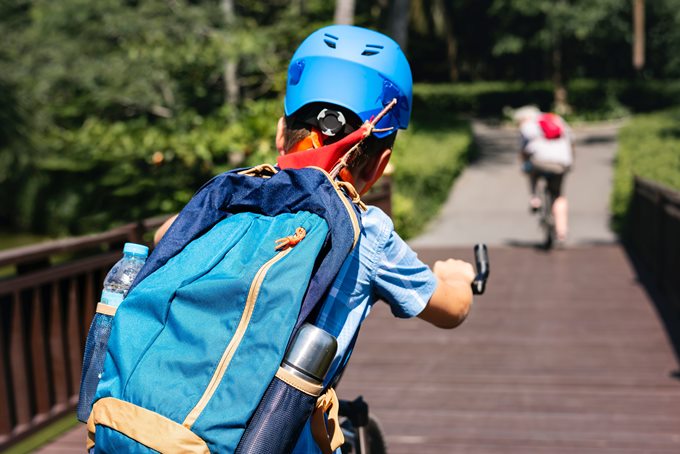AMY FINLAYSON
Amy Finlayson is the Haemophilia Clinical Nurse at the Queensland Children’s Hospital, Brisbane
Haemophilia, unlike other well-known conditions such as asthma and eczema, is a rare chronic medical condition. Because it is rare there are also a lot of misconceptions surrounding haemophilia, such as people with haemophilia can bleed more quickly than people without this condition and therefore cannot play sports or run around at lunch time. The problem with these common misconceptions is that the person living with haemophilia and those around them can be excluded from regular school activities.
Haemophilia treatment has come a long way over the past 20 years. In Australia, children with haemophilia are expected to lead normal lives. Participation in play and sporting activities is strongly encouraged in today’s generation of children as this creates a broad range of benefits including health and fitness and peer experiences from a young age.

A common concern for teachers who have pupils with haemophilia in their classroom is that physical activities and sports can cause injuries and bleeds. Teachers may then discourage participation in activities such as playtime, football (soccer and touch), running and physical education (PE) classes. These activities, although they do not come without risk of injury for any child are also important for healthy joints and muscles, motor skill development and socialisation in peer groups.
School years are an extremely important part of any child’s life.
Each state and territory has its own way of managing health conditions in schools.
Speak to your local Haemophilia Treatment Centre or your local Foundation about resources and education for schools on haemophilia that is suitable for your child. They may have a school pack that they will tailor for your child. Some may be able to work with you to provide an education session for the teachers and/or students in the school, or to develop an individualised plan in collaboration with you and the school. They may also offer other types of education, such as an annual seminar for teachers.
For more information on sport and exercise for young people with haemophilia, visit the online video set and toolkit On the move with haemophilia. This is aimed at parents, teachers and coaches, and is available on the HFA website.
The development of school resources at Queensland Children’s Hospital was introduced as an informative tool for teachers in the management of injuries and medical emergencies for pupils with haemophilia. These medical action plans and fact sheets are guidelines that have been developed in collaboration with teachers from Education Queensland. These resources also allow for communication between health professionals and teachers and more importantly to integrate these children into school communities.
Our resources refer to the BRuCe bleed risk calculator (www.brucecalc.net), which is used by some patients and families with haemophilia to assess risk of bleeding with physical activities and sports. BRuCe has been produced by researchers at the George Institute for Global Health and Neuroscience Research Australia with funding from AHCDO, the Australian Haemophilia Centre Directors' Organisation. The calculator gives a rating of low, medium or high-risk associated with sports based on the information you input. The calculator will assess the following:
It is important to remember that the calculator is an only an ESTIMATE of bleeding risk as everyone is an individual.
The medical action plan (MAP) that we have developed includes:
The Haemophilia fact sheet that we have developed includes:
In keeping with today’s technology, we developed these resources to be user friendly and available online via the Children’s Health Queensland website. The online resources allow families in Queensland to access this information easily and is family-centred, allowing families to be autonomous and involved in their child’s care.
The feedback from families and teachers in relation to these online school resources has been positive. The online process has made the information easy to access and the forms easy to complete.
To download the Queensland Children’s Hospital factsheets, visit
https://www.childrens.health.qld.gov.au/service-haematology-haemophilia/
For all contact sports such as football (soccer), rugby, boxing etc, speak to your haemophilia team.
The Bruce Calculator (the AHCDO bleeds risk calculator) also includes information on activity types and bleeding risks – www.brucecalc.net
Haemophilia Foundation Australia acknowledges the Traditional Owners and Custodians of Country throughout Australia, the land, waters and community where we walk, live, meet and work. We pay our respects to Elders past and present and extend that respect to all Aboriginal and Torres Strait Islander peoples.
Sign up for the latest news, events and our free National Haemophilia magazine